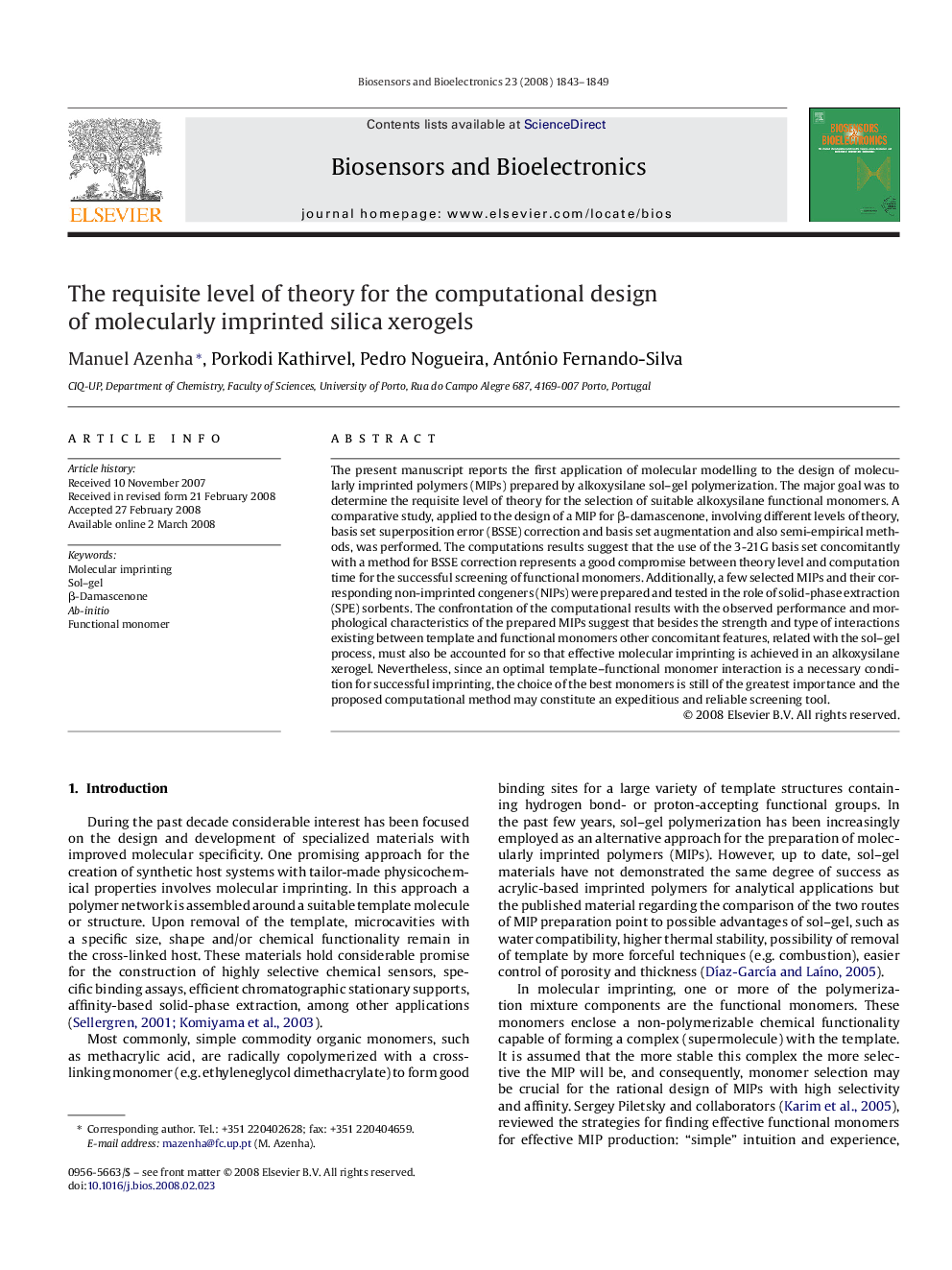| Article ID | Journal | Published Year | Pages | File Type |
|---|---|---|---|---|
| 869070 | Biosensors and Bioelectronics | 2008 | 7 Pages |
The present manuscript reports the first application of molecular modelling to the design of molecularly imprinted polymers (MIPs) prepared by alkoxysilane sol–gel polymerization. The major goal was to determine the requisite level of theory for the selection of suitable alkoxysilane functional monomers. A comparative study, applied to the design of a MIP for β-damascenone, involving different levels of theory, basis set superposition error (BSSE) correction and basis set augmentation and also semi-empirical methods, was performed. The computations results suggest that the use of the 3-21G basis set concomitantly with a method for BSSE correction represents a good compromise between theory level and computation time for the successful screening of functional monomers. Additionally, a few selected MIPs and their corresponding non-imprinted congeners (NIPs) were prepared and tested in the role of solid-phase extraction (SPE) sorbents. The confrontation of the computational results with the observed performance and morphological characteristics of the prepared MIPs suggest that besides the strength and type of interactions existing between template and functional monomers other concomitant features, related with the sol–gel process, must also be accounted for so that effective molecular imprinting is achieved in an alkoxysilane xerogel. Nevertheless, since an optimal template–functional monomer interaction is a necessary condition for successful imprinting, the choice of the best monomers is still of the greatest importance and the proposed computational method may constitute an expeditious and reliable screening tool.
